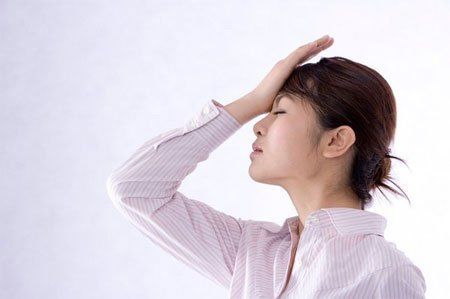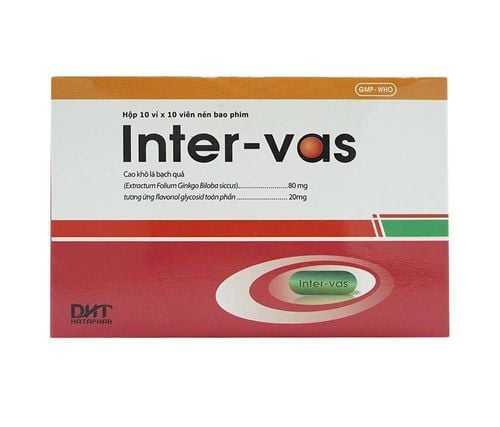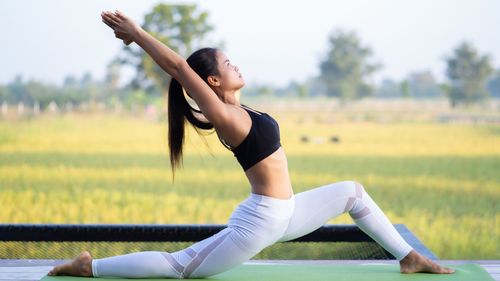This is an automatically translated article.
It's time to roll out your yoga mat and explore a combination of physical and mental exercises. Whether you are young or old, overweight, obese or ill, yoga has the power to calm your mind and strengthen your body. Don't be intimidated by yoga jargon, luxurious yoga studios, and intricate poses. Yoga is for everyone. Here are some helpful yoga tips for all levels.1. How to start with Yoga, and what kind of yoga should I practice?
Yoga is a popular form of practice around the world that combines breathing regulation, movement, and meditation. Introduced to the United States from India more than a century ago, yoga has long been lauded for its physical and mental benefits.Research shows that yoga can help manage stress, ease depression and anxiety, improve mood, and improve sleep quality. Additionally, yoga has been shown to increase flexibility, improve balance and coordination, reduce pain, and increase muscle strength.
Taking a yoga class for the first time can seem overwhelming to some, but it's not something to worry about if we understand the mechanics of how they work. A typical yoga class lasts between 45 minutes and 90 minutes. Depending on the teacher and teaching style, it usually begins with a focus on the breath, transitions to poses known as asanas for the majority of the class, and sometimes ends with meditation to help hypothermia.
1.1. How to Get Started with Some Yoga Classes The best way to learn yoga is with practice, but if you're nervous about taking a class, don't be afraid to learn a bit of theory before joining. Consider the following:
Yoga classes:
Classes come in many different styles of yoga, so you should read class descriptions at your local yoga studios to find the right class for you. with me. Popular varieties include:
Hatha yoga classes tend to be good for beginners because they move more slowly and the movements are gentler Vinyasa, Ashtanga and strength yoga classes can be challenging more, depending on the level of instruction of the instructors. Iyengar places great emphasis on proper alignment and often uses props to help students perfect their form. Hot yoga is a form of yoga practice that is practiced in hot conditions - many studios go up to 40 degrees Celsius. Many people like to practice yoga in hot temperatures, but those who are sensitive to heat or have certain medical conditions You may find hot yoga uncomfortable. Kundalini yoga is the term for "a mental energy or life force located at the base of the spine." In Kundalini yoga, practitioners use breathing exercises, physical postures, chanting, and meditation to unleash this energy. Kundalini yoga has been known to aid in detoxification for drug addicts. 1.2. Equipment used for yoga exercises Most yoga classes encourage students to bring a yoga mat to class, but if you don't have your own, classes are often available to rent for a small fee. Yoga classes and gyms typically provide all the equipment and props a student needs, including pads, blocks, and blankets.
If you intend to practice yoga at home, you can buy a few basics or find substitutes right in your home before you start. For example, you can use a belt or scarf in place of yoga bands and pillows, or a sturdy hardcover book for yoga blocks.
1.3 What to wear for yoga Choose pants or shorts that are comfortable, stretchy, and a tight top that won't cover your head every time you do an inversion. Practitioners will not need special shoes because yoga is usually done with bare feet. Practitioners can also wear a pair of yoga socks with straps at the bottom to keep their feet from slipping on the mat.
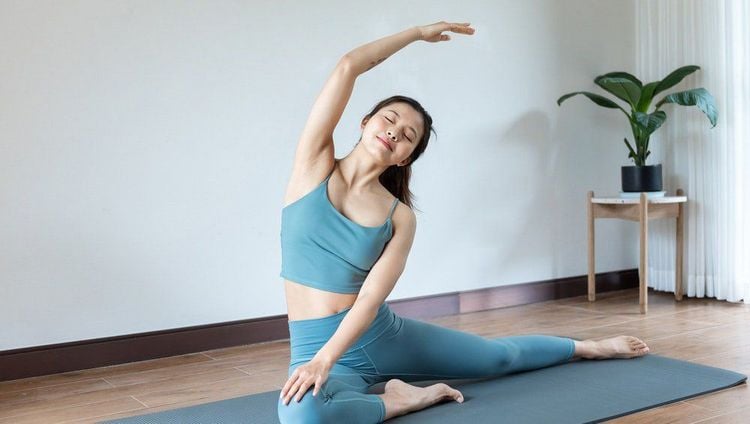
Khi mới tập yoga, bạn có thể chọn trang phục thoải mái và áo ôm sát
Gym (or gym): Nowadays almost all major gyms offer yoga classes. If you're already a gym member, you can regularly take classes at no extra cost. Many of these instructors are highly qualified, however in some cases the practitioner may also have to work with several new instructors trying to build on their experience and skills. . Yoga studios: Usually home to highly qualified instructors who focus primarily on yoga, most studios also offer a variety of classes that are arranged throughout the day. However, yoga studios tend to be more expensive, and for some people, they may feel less confident going to a yoga studio. At home: with the availability of smartphones and online video services, complete learners can access online classes from anywhere. Online classes or instructional DVDs are a great and affordable option for those who can't afford in-person instruction, or who want to practice before taking a class.
2. Tips on simple yoga poses for all levels to stretch and strengthen
Practicing yoga is not difficult. A person just needs to get out of bed in the morning and stretch his arms above his head, that is already a pose in yoga exercises. Yoga introduces the skill of stretching for a balanced body and a real sense of body positions. Many of the basic yoga poses many people may find familiar. Our bodies naturally bend and flex according to postures. The sequence of 10 poses below looks simple but will stretch and strengthen the major muscle groups of the practitioner.2.1. Tadasana In climbing pose, a lot happens, although it may look like the practitioner is just standing. The heels are down, the muscles of the legs are working, the bones are stacked on the shoulders directly over the hips, the shoulder blades slide back and the top of the head is raised. Do not forget to breathe evenly to the rhythm of the exercise.
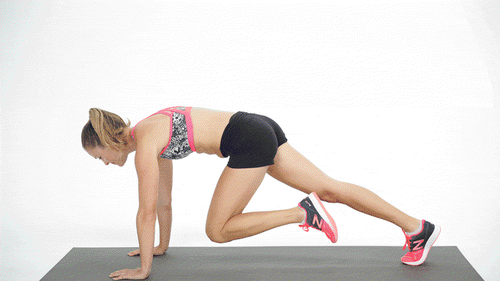
Tư thế leo núi là tư thế phù hợp cho người mới tập yoga
2.3. Forward Bend (Uttanasana) Exhale and fold your legs into a forward bend. If your hamstrings feel a bit tight at first, bend your knees so you can relax your spine. Let your head be heavy. Keep legs slightly bent with feet hip-width apart for more stability (legs can be straightened, but not necessary). You can grasp the elbows with opposite hands while swaying gently to the sides.
2.4. Wreath Pose (Malasana) Move your feet to the edge of the mat and bend your knees to come into a squat. The toes can be turned outward if necessary. If your heels don't touch the floor, you can sit on two stacked yoga blocks. This modification makes the garland pose more accessible to many people. This is a pretty natural position for children, but it's easy to lose it as adults. It's great for the hips and counteracts the effects of sitting too much in the seat and in the car. This is also a very useful pose if you enjoy gardening.
2.5. Lunge From garland pose, return to a forward bend with legs gently bent and feet under hips. When you're ready, step your left foot toward the back of the mat and bend your right knee for a deep push-up. Try to bring your bent knee directly over your ankle so that your right thigh is parallel to the floor. Feel free to rest your hands on the blocks to bring the floor to you. Keep the left leg straight and strong with the heel reaching back. If it's too tight, you can lower your left knee to the mat. Hold for 5 breaths before bringing your left foot back to the front of the mat next to your right foot. Then repeat the lunge with the left foot forward and the right foot back.
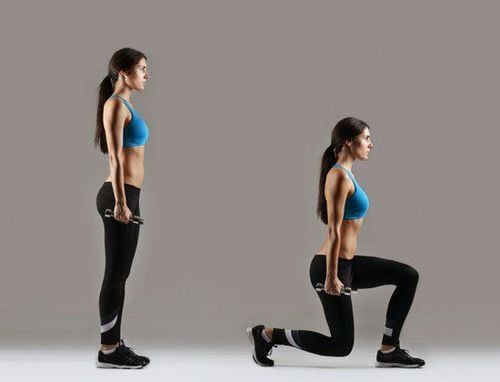
Tư thế Lunge cũng là một trong những tư thế người mới tập yoga nên chọn
2.7. Staff Pose (Dandasana) After regaining your breath, rotate your legs so that they are spread out in front of you. The staff pose is a sitting position equivalent to the mountain pose, in that it looks very simple but has a lot of benefits for the practitioner. Strong legs with flexed feet. Shoulders overlap the hips so that the spine is long and straight. Arms can be straight or slightly bent.
2.8. Sitting Forward Bend (Paschimottanasana) As you exhale, then bring your body over your legs in a forward bend. Allow gentle knee bends to keep this pose simple and manageable. Try to regulate the breath, lengthening the spine on each inhale and creating a forward fold on each exhale. Hold for five breaths, keeping your feet flexible.
2.9. Knee Pose (Janu Sirsasana) Return to sit and bend your left leg, then bring the sole of your left foot to the inside of your right thigh. Use the same technique described above to deepen the pose with your breath. After five breaths, sit up and switch legs.
2.10. Happy Baby Pose (Ananda Balasana) Lie on your back and hug your knees to your chest. Bend at the waist bringing the leg into a 90 degree angle. Bend your feet and hold them from the outside as you pull your knees down toward your armpits. This is the happy baby pose. Roll from side to side slightly above the sacrum if it feels comfortable. After five breaths, straighten your legs on the floor and rest.
For those who are new to yoga or planning to practice yoga, they have probably heard a lot of what other people have to say about this issue. However, it is a fact that yoga is not just for women. You don't need a very flexible body to practice yoga. Yoga is not a religion, nor is it too difficult or too easy to practice. Yoga is for people of all levels and it can fit any lifestyle. If we are ready to practice, we will discover how easily yoga can be integrated.
Please dial HOTLINE for more information or register for an appointment HERE. Download MyVinmec app to make appointments faster and to manage your bookings easily.
Reference source: verywellfit.com



